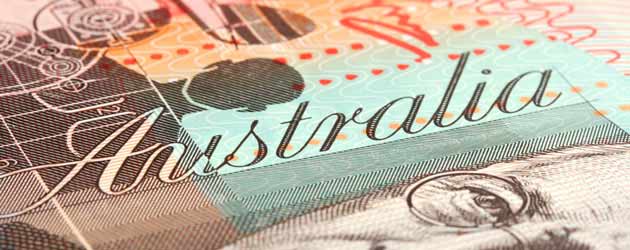
The Pound to Australian Dollar exchange rate has fallen by just over a cent to 1.4520 in response to comments from Reserve Bank of Australia Deputy Governor Philip Lowe that the Australian Dollar’s recent strength is good for the Australian economy.
The RBA Deputy Governor noted that inflation would have soared dangerously high if the ‘Aussie’ Dollar had not risen in step with the Australian economy during the golden years of the mining boom. With the mining sector set to reach its peak later this year, Lowe commented that without the strong domestic currency Australia could have found itself in an unsustainable bubble:
“Had we not experienced the sizeable appreciation (of the Australian Dollar) over recent years, it is highly likely that the economy would have overheated and that we would have substantially higher inflation and substantially higher interest rates”.
Many businesses in Australia have found it hard to retain competitiveness on the global marketplace as the Australian Dollar has continued to grow from strength to strength in recent years. Prominent business owners have spoken out against the indomitable domestic currency, and indeed, the RBA have cut the benchmark interest rate by 175 basis points over the past 15 months in efforts that are partly aimed at sustaining growth and partly designed to keep the ‘Aussie’ in check.
However, Lowe asserts that the consequences of a weaker Australian Dollar are far greater than the short-term benefits for exporters:
“Businesses right across the spectrum, including in the manufacturing sector, are adjusting to the new realities. This adjustment is often difficult, but it does hold out the prospect of higher productivity and higher living standards”.
Lowe went on to describe how the recent rate cuts, which have brought the interest rate down to an equal all-time low of 3.00%, have already started to have a positive effect on the domestic economy. The list of improvements – from higher house prices, more mortgage approvals, and stronger consumer confidence; to heightened stock market productivity, progress in the retail and construction sectors, and an uptick in the number of people employed – came as music to the ears of ‘Aussie’ Dollar traders as it appeared to reduce the probability of another interest rate cut over the next few months.
The Australian Dollar exchange rate grew by one cent against the Pound to 1.4520 (GBP/AUD), 0.5 cents against the US Dollar to 1.0400 (AUD/USD), 0.5 cents against the Canadian Dollar to 1.0625 (AUD/CAD), and 1.6 cents against the Japanese Yen to 99.22 (AUD/JPY) as markets reacted to the hawkish RBA rhetoric.
A lower interest rate cut outlook is perceived to be bullish for the Australian Dollar because it suggests that the currency will retain its relatively high rate of return – its yield – which attracts traders to invest in the Antipodean currency.
The Australian Dollar began the week on the back-foot as the Cyprus bailout tax levy threatened to destabilise markets, which damaged risk sentiment. But with Cyprus now likely to dilute the new law to protect the majority of its poorer citizens, the prospect of contagion was reduced and subsequently the high-yielding ‘Aussie’ came back into demand on the currency market.

Comments are closed.